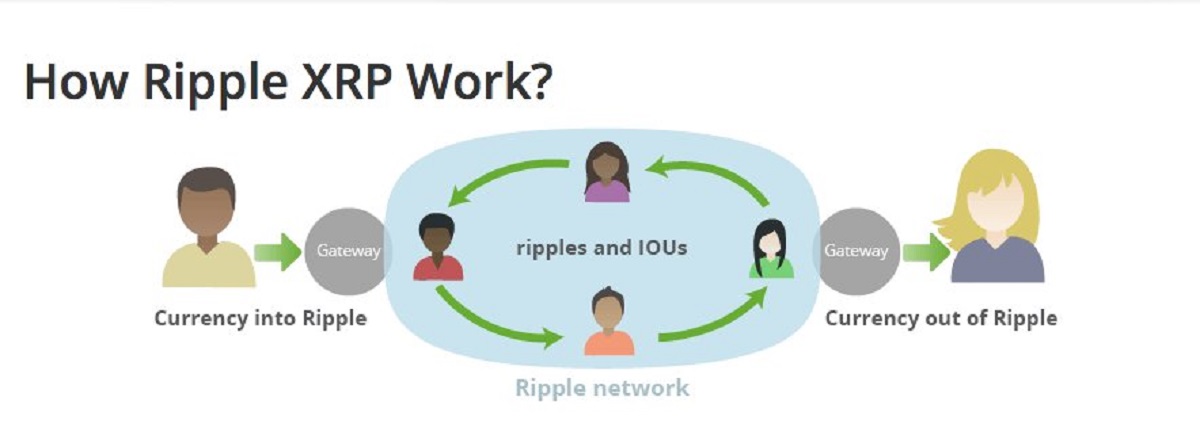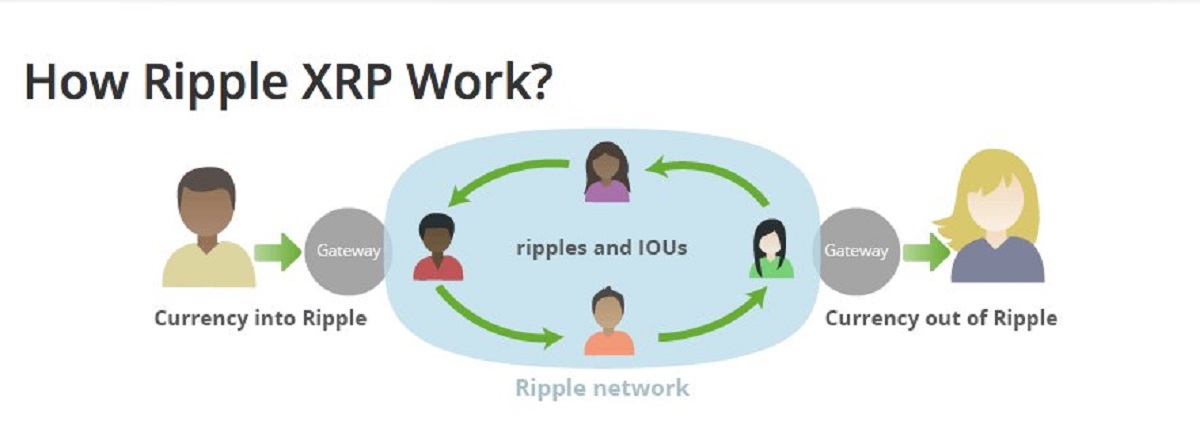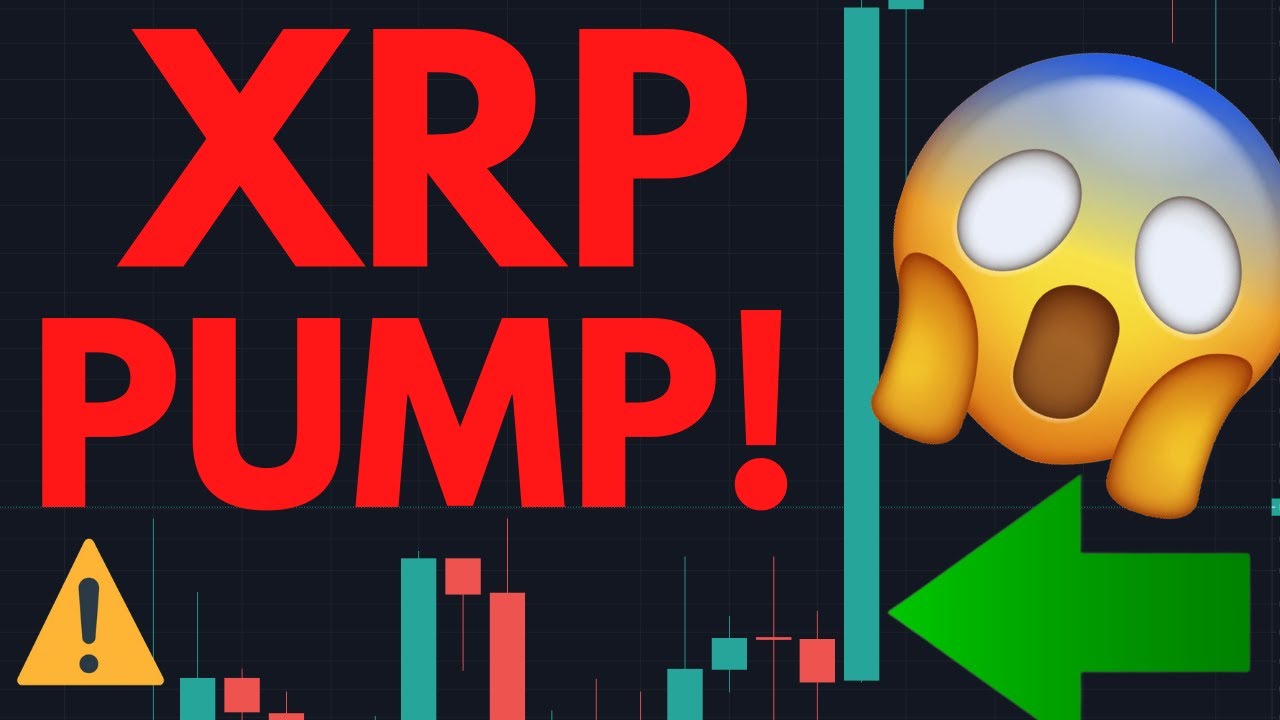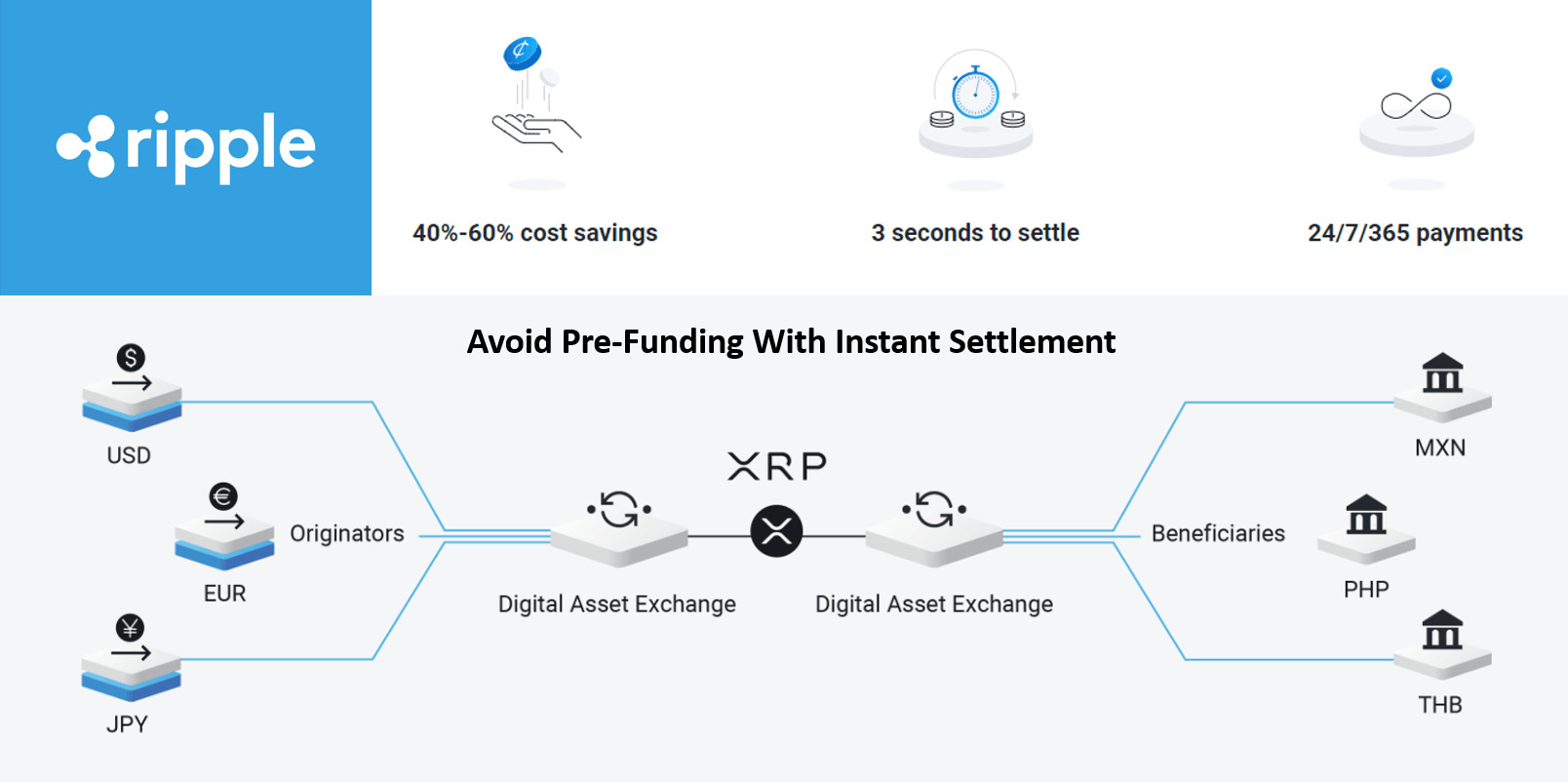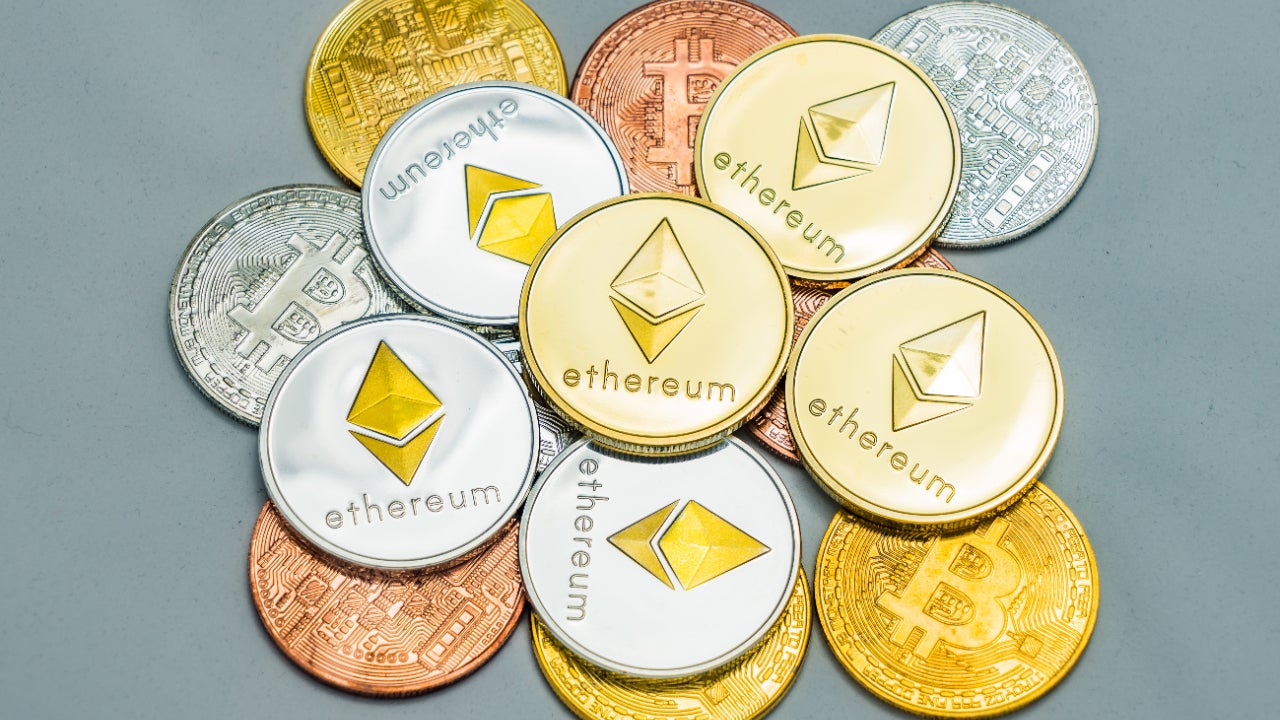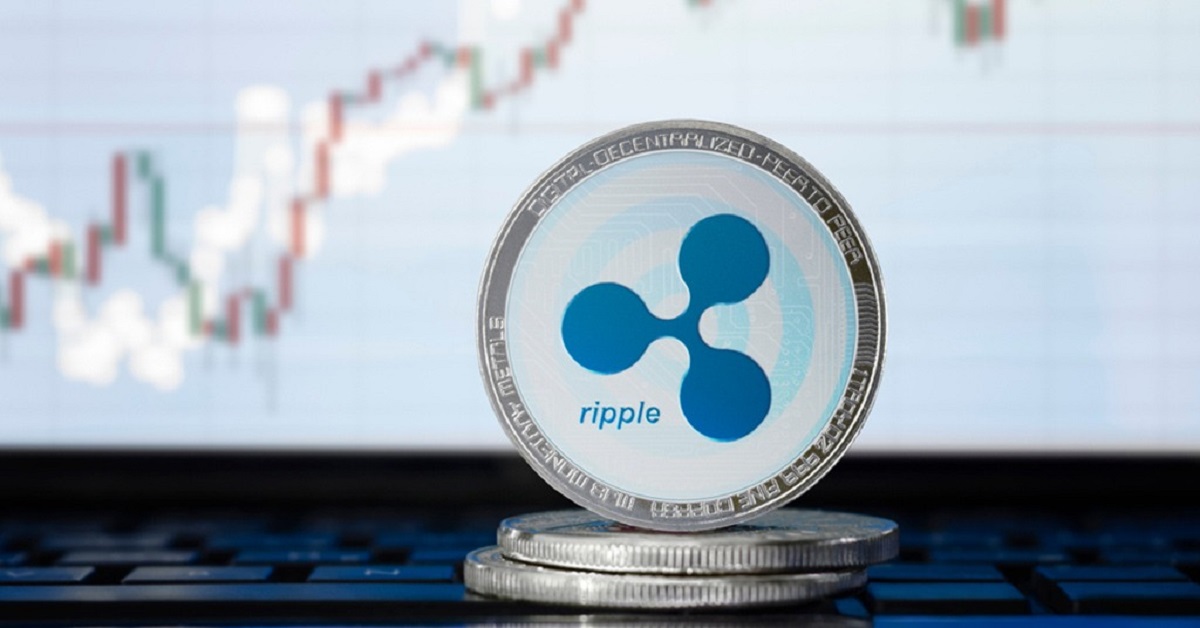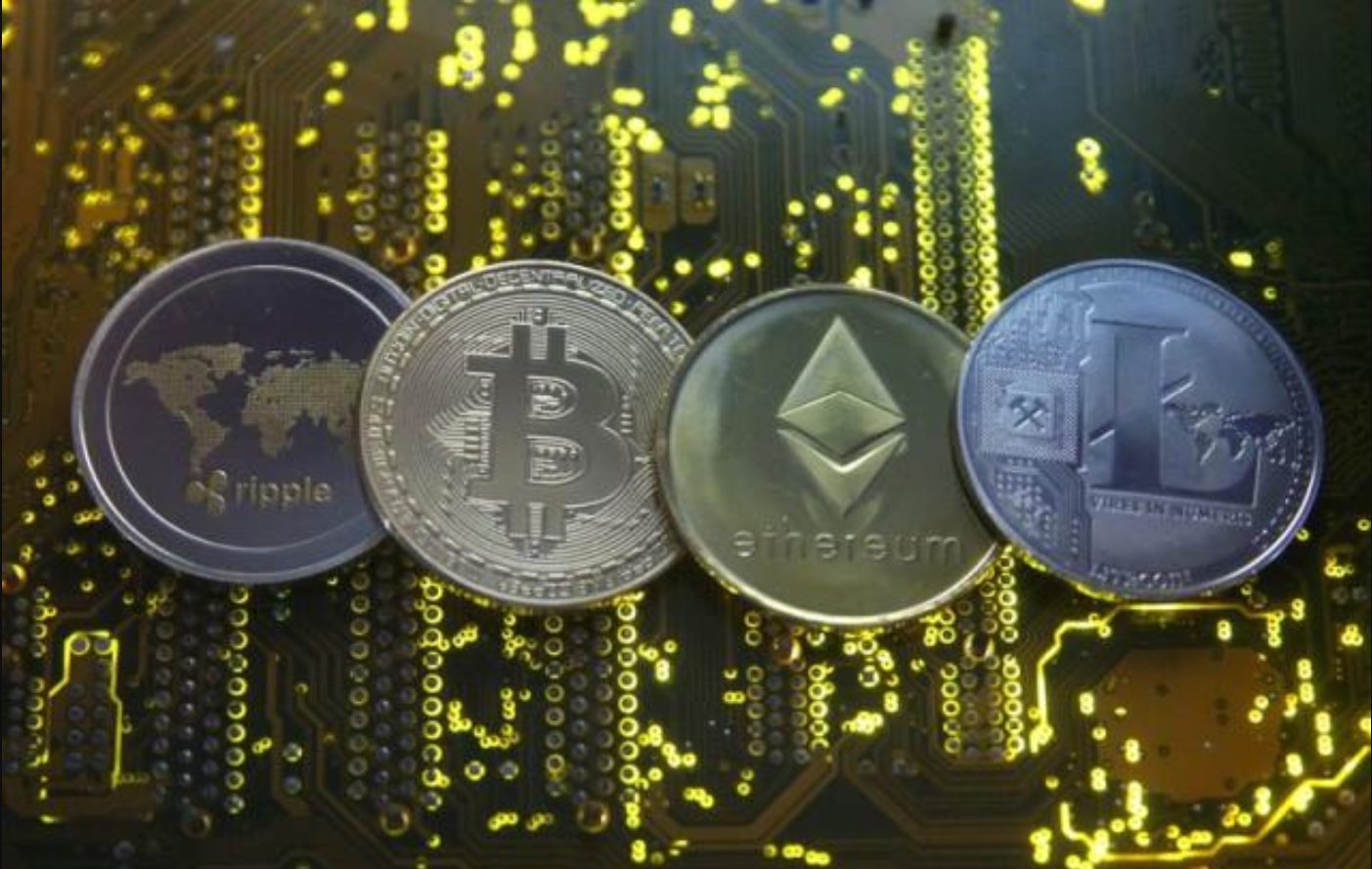Introduction
Welcome to the world of Ripple – a digital currency that has been making waves in the financial industry. With its innovative technology and growing popularity, Ripple has gained attention as a viable alternative to traditional banking systems and cryptocurrencies like Bitcoin. In this article, we will explore the fascinating world of Ripple and delve into its history, functionality, advantages, and disadvantages.
Ripple, often referred to as XRP, was created with the aim of revolutionizing the way international transactions are conducted. Unlike traditional payment methods that rely on centralized systems, Ripple operates on a decentralized network, utilizing blockchain technology. This enables faster and more cost-effective transactions while minimizing the need for intermediaries.
The concept of Ripple dates back to 2004 when Ryan Fugger envisioned a decentralized digital currency system called RipplePay. However, it wasn’t until 2012 that the company Ripple Labs, headed by Chris Larsen and Jed McCaleb, took over and reimagined the platform as we know it today.
Ripple’s primary objective is to facilitate secure and swift cross-border transactions at significantly lower costs. While it functions as a cryptocurrency, Ripple is distinguished by its unique consensus algorithm called the Ripple Protocol Consensus Algorithm (RPCA). This algorithm eliminates the need for mining, making it more energy-efficient than other cryptocurrencies like Bitcoin.
One of the defining features of Ripple is its ability to bridge various currencies, both fiat and digital. By acting as a mediator between diverse financial networks, Ripple enables seamless transfers, regardless of the currency or location. This makes it an ideal solution for international remittances, enabling users to send and receive funds in real-time.
Now that we have introduced Ripple and its fundamental concepts, let’s dive deeper into its functionality, features, advantages, and disadvantages. Join us as we unravel the possibilities and implications of this transformative digital currency.
What is Ripple?
Ripple is a digital currency and a payment protocol designed to facilitate secure and efficient transactions. It operates on an open-source decentralized network, enabling instant and low-cost money transfers globally. Ripple’s native cryptocurrency, XRP, serves as a bridge currency, facilitating the exchange of value between different fiat currencies and cryptocurrencies.
Unlike traditional banking systems that rely on intermediaries and can take days to process international transactions, Ripple offers near-instant settlement. It achieves this by utilizing its unique consensus algorithm, the Ripple Protocol Consensus Algorithm (RPCA). This algorithm allows for fast and secure transaction validation without the need for mining, making Ripple more energy-efficient than other cryptocurrencies.
Ripple’s payment protocol, also known as RippleNet, is a network of financial institutions, payment providers, and other participants. Through RippleNet, these entities can connect and transact seamlessly, regardless of their geographical location or the currencies they use. The goal is to create a global network where value can be transferred and exchanged in a cost-effective and timely manner.
One of the key components of Ripple’s technology is the use of gateways, which serve as connectors between the Ripple network and traditional financial systems. These gateways enable users to deposit and withdraw funds from their Ripple accounts with ease, bridging the gap between digital and fiat currencies.
Ripple’s decentralized nature and focus on interoperability make it an attractive solution for financial institutions seeking to improve cross-border payment processes. By using Ripple, banks and payment providers can streamline their operations, reduce costs, and enhance the overall customer experience.
In summary, Ripple is both a digital currency and a payment protocol designed to enable fast, secure, and cost-effective transactions. With its focus on interoperability and efficient cross-border transfers, Ripple has the potential to shape the future of global payments and revolutionize the financial industry.
History of Ripple
The history of Ripple dates back to 2004 when Ryan Fugger created RipplePay, a decentralized digital currency system that allowed users to make secure and direct transactions. However, it wasn’t until 2012 that Ripple as we know it today started to take shape.
In 2012, Chris Larsen and Jed McCaleb founded OpenCoin, the precursor to Ripple Labs, with the vision of revolutionizing how money moves around the world. The company’s initial focus was on developing a digital payment protocol that could be used by financial institutions to enable faster, cheaper, and more secure transactions.
In 2013, OpenCoin rebranded itself as Ripple Labs and introduced Ripple as both a payment protocol and a native digital currency called XRP. Ripple differentiated itself from other cryptocurrencies by positioning itself as a solution for the financial industry, aiming to bridge the gap between traditional banking systems and digital currencies.
Over the years, Ripple has achieved significant milestones. In 2014, it partnered with a variety of financial institutions and payment providers to integrate its technology into their operations. This led to increased adoption of Ripple’s payment protocol and a growing network of participants.
By 2017, Ripple had established strong partnerships with major banks and financial institutions worldwide, including American Express and Santander. This contributed to the exponential growth in both the value and popularity of XRP, catapulting Ripple into the spotlight and making it one of the top cryptocurrencies by market capitalization.
Ripple continues to innovate and expand its reach. It has introduced new features and products, such as the Interledger Protocol (ILP), which allows for interoperability between different payment networks. This further strengthens Ripple’s position as a leading player in the global payments industry.
Today, Ripple’s impact is being felt across the financial sector, with its technology being adopted by banks and payment providers to improve cross-border transactions. The company remains dedicated to advancing its mission of transforming the way money moves, and its success thus far is a testament to the potential of blockchain technology in revolutionizing traditional financial systems.
As Ripple continues to evolve, it will be fascinating to see how its history unfolds and the impact it has on the future of finance.
How does Ripple work?
Ripple operates on a decentralized network and utilizes blockchain technology to enable fast and secure transactions. The key components that make Ripple work include the Ripple Consensus Algorithm, the XRP Ledger, and the Interledger Protocol.
The Ripple Consensus Algorithm (RPCA) is at the core of Ripple’s transaction validation process. Unlike other cryptocurrencies that rely on mining, RPCA uses a consensus mechanism to confirm transactions. It works by a distributed network of validator nodes reaching a consensus on the validity and order of transactions, ensuring agreement across the network without the need for energy-intensive computation.
The XRP Ledger is a decentralized ledger that powers the Ripple network. It maintains a record of all transactions and account balances. Every transaction on the XRP Ledger must be authorized and validated by the consensus process. This ledger ensures the integrity and transparency of the network, making it resistant to tampering or fraud.
Ripple’s Interledger Protocol (ILP) enhances its functionality by enabling interoperability between different payment networks. ILP acts as a connector, allowing for the seamless transfer and exchange of value across different ledgers, whether they are traditional banking systems or other blockchains. This functionality makes Ripple an attractive solution for cross-border transactions that involve different currencies and financial institutions.
When a Ripple transaction occurs, it is not limited to the transfer of XRP alone. Ripple’s payment protocol, known as RippleNet, allows for the transfer of any form of value, be it traditional fiat currencies or other cryptocurrencies. This flexibility makes Ripple a versatile platform for financial institutions and payment providers, offering them a seamless and efficient means of transferring value globally.
One of the key benefits of Ripple’s technology is its near-instant settlement. Traditional banking systems can take days to settle international transactions, whereas with Ripple, settlements can happen within a matter of seconds. This speed is achieved through its consensus-based system and the lack of intermediaries involved in the process.
Overall, Ripple’s unique approach to decentralized payments, its consensus algorithm, and interoperability features make it a distinctive digital currency. By leveraging blockchain technology, Ripple enables fast, secure, and cost-effective transfers of value, revolutionizing the way international transactions are conducted.
Features of Ripple
Ripple offers several key features that make it stand out in the world of digital currencies and blockchain technology. These features contribute to its growing popularity among financial institutions and individuals alike. Let’s explore some of the notable features of Ripple:
- Fast and secure transactions: Ripple’s consensus algorithm enables near-instant settlement of transactions, making it one of the fastest payment networks. Transaction security is ensured through cryptography and the distributed nature of the network.
- Low transaction costs: Ripple’s focus on cost-efficiency means that transactions conducted using XRP incur significantly lower fees compared to traditional banking systems and other cryptocurrencies. This makes it an attractive option, particularly for cross-border transfers.
- Interoperability and bridge currency: Ripple acts as a bridge currency, facilitating the exchange of value between different fiat currencies and cryptocurrencies. This interoperability enables seamless transfers across diverse payment networks without the need for intermediaries.
- Scalability and high throughput: Ripple’s technology is designed to handle a high volume of transactions. The XRP Ledger has the capacity to process thousands of transactions per second, ensuring scalability and efficient network performance.
- Global accessibility: Ripple’s network is accessible to anyone with an internet connection, allowing individuals and businesses from around the world to participate in the network and benefit from its services.
- Support from financial institutions: Ripple has formed partnerships with numerous financial institutions and prominent payment providers. This support from established players in the financial industry bolsters Ripple’s credibility and opens up opportunities for widespread adoption.
- Regulatory compliance: Ripple places a strong emphasis on regulatory compliance, working closely with banks and financial institutions to ensure adherence to relevant laws and regulations. This commitment to compliance increases trust and facilitates the integration of Ripple’s technology into existing financial systems.
These features collectively contribute to the appeal of Ripple as a digital currency and payment protocol for both individuals and businesses. With its focus on speed, cost-effectiveness, interoperability, and regulatory compliance, Ripple is poised to play a pivotal role in shaping the future of global payments and revolutionizing the financial industry.
Advantages of using Ripple
Ripple offers several advantages that make it a compelling choice for individuals, businesses, and financial institutions. Let’s explore some of the key advantages of using Ripple:
- Efficient cross-border transactions: Ripple’s payment protocol enables fast and cost-effective cross-border transactions. By eliminating intermediaries and utilizing blockchain technology, Ripple reduces the time and costs associated with traditional international transfers.
- Low transaction fees: Ripple transactions conducted using XRP boast significantly lower fees compared to traditional banking systems. This cost-effectiveness makes Ripple an attractive option for individuals and businesses looking to minimize transaction costs.
- Near-instant settlement: Ripple’s consensus algorithm enables near-instant settlement of transactions. This ensures that funds are available to the recipient almost immediately, eliminating the need for lengthy clearing and settlement processes.
- Increased liquidity: Ripple’s native cryptocurrency, XRP, serves as a bridge currency, facilitating the exchange of value between different fiat currencies and cryptocurrencies. By providing liquidity, Ripple enables seamless transfers and enhances the global accessibility of funds.
- Enhanced transparency: Ripple’s use of a decentralized ledger, the XRP Ledger, ensures transparency and immutability. Participants in the network can easily verify and track transactions, adding a layer of trust to the financial ecosystem.
- Financial institution partnerships: Ripple has formed strategic partnerships with major banks and financial institutions worldwide. These partnerships not only enhance the credibility of Ripple but also open up avenues for collaboration in improving cross-border payment processes.
- Regulatory compliance: Ripple’s commitment to regulatory compliance has positioned it as a reliable and trusted platform. By working closely with regulatory bodies and financial institutions, Ripple ensures adherence to legal frameworks, mitigating risks and enhancing user confidence.
These advantages highlight the potential of Ripple to revolutionize the global payments landscape. Through its efficiency, cost-effectiveness, transparency, and regulatory compliance, Ripple presents an attractive alternative to traditional banking systems and other cryptocurrencies. As the adoption of Ripple continues to grow, we can expect its unique advantages to have a transformative impact on the world of finance.
Disadvantages of Ripple
While Ripple offers several advantages, it is important to consider some of the potential drawbacks associated with its use. Here are some of the key disadvantages of Ripple:
- Centralization concerns: Despite being a decentralized network, some critics argue that Ripple’s consensus algorithm is more centralized compared to other blockchain-based cryptocurrencies. This is because Ripple Labs, the company behind Ripple, still holds a significant amount of XRP and has control over the development and governance of the network.
- Dependency on RippleNet: As a payment protocol, Ripple relies on the participation of financial institutions and payment providers that are part of the RippleNet network. This dependency raises concerns about the continued growth and adoption of Ripple if these partnerships were to diminish or change in the future.
- Volatility of XRP: Ripple’s native cryptocurrency, XRP, has experienced significant price volatility. This volatility can impact the value of transactions and can be a concern for individuals and businesses that rely on stable currency values for financial planning and operations.
- Perceived association with traditional banking systems: Ripple’s close collaborations with banks and financial institutions have led to some criticism from cryptocurrency purists who believe in decentralization and complete independence from traditional financial systems. This perception may deter certain individuals who value the purely decentralized nature of other cryptocurrencies.
- Regulatory challenges: While Ripple strives for regulatory compliance, navigating the complex and evolving regulatory landscape can present challenges. The different regulations across jurisdictions may impact the adoption and use of Ripple, potentially limiting its reach and usability.
- Competition from other cryptocurrencies: Ripple faces competition from other cryptocurrencies and blockchain-based solutions that aim to provide efficient cross-border payment solutions. Competition can impact Ripple’s ability to maintain its position as a leading player in the industry.
It is essential to consider these disadvantages in relation to individual needs and goals when evaluating the suitability of Ripple for specific use cases. While Ripple offers unique advantages, it is important to be aware of the potential drawbacks to make informed decisions about its adoption and usage.
Use Cases of Ripple
Ripple has gained significant traction across a range of industries, offering various use cases that showcase the potential of its payment protocol and digital currency. Let’s explore some of the notable use cases of Ripple:
- Remittances: Ripple’s fast and low-cost transactions make it an ideal solution for cross-border remittances. By leveraging Ripple’s network, individuals can send money to their loved ones abroad quickly and at a fraction of the cost compared to traditional remittance methods.
- Banking and Financial Institutions: Ripple’s technology has garnered interest from major banks and financial institutions seeking to improve their cross-border payment processes. By integrating Ripple into their operations, these institutions can achieve faster and more secure transactions, reduce costs, and enhance overall customer experience.
- E-commerce: Ripple’s fast settlement times and low fees are advantageous for e-commerce platforms. By accepting XRP as a form of payment, merchants can tap into a global customer base and benefit from the speed and cost-effectiveness of Ripple’s payment protocol.
- Insurance: The insurance industry can leverage Ripple’s technology to facilitate efficient and transparent claims settlement. By using Ripple for real-time payments, insurers can streamline their processes, reducing administrative costs, and improving customer satisfaction.
- Supply Chain: Ripple’s ability to facilitate seamless transfers of value across different payment networks makes it suitable for optimizing supply chain transactions. By integrating Ripple, businesses can simplify cross-border payments, reduce currency exchange costs, and enhance overall supply chain efficiency.
- Non-profit and charitable organizations: Ripple’s low transaction fees and fast settlement times make it an attractive option for non-profit organizations to receive and distribute funds. With Ripple, these organizations can maximize the impact of charitable donations by minimizing transaction costs and ensuring timely assistance.
- Emerging markets: Ripple’s focus on providing financial solutions for the unbanked or underbanked populations in emerging markets is a significant use case. By leveraging Ripple’s payment protocol, individuals in these markets can gain access to affordable and secure financial services, empowering economic growth and financial inclusion.
The versatility of Ripple’s technology enables it to address a wide range of use cases across various industries. By providing fast, low-cost, and secure transactions, Ripple offers a compelling solution for traditional financial institutions, e-commerce platforms, insurance companies, non-profit organizations, and anyone seeking efficient cross-border payments.
As Ripple’s ecosystem continues to evolve, we can expect to see expanded use cases and innovative applications that further demonstrate the transformative potential of this digital currency and payment protocol.
Ripple vs. Bitcoin: What’s the difference?
Ripple and Bitcoin are both prominent players in the world of cryptocurrencies, but they differ significantly in their purpose, technology, and approach. Let’s explore some of the key differences between Ripple and Bitcoin:
Currency vs. Payment protocol: Ripple and Bitcoin have different primary functions. While Bitcoin is primarily a digital currency, Ripple serves as both a digital currency (XRP) and a payment protocol (RippleNet). Bitcoin aims to be a decentralized form of digital cash, enabling peer-to-peer transactions, while Ripple focuses on facilitating fast and secure cross-border payments.
Decentralization: Bitcoin is known for its decentralization, as it operates on a peer-to-peer network without any central authority. Ripple, on the other hand, has faced criticism regarding its level of centralization, as Ripple Labs, the company behind Ripple, still holds a significant amount of XRP and has control over the development and governance of the network.
Consensus algorithm: Bitcoin uses a proof-of-work (PoW) consensus algorithm, where miners compete to solve complex mathematical problems to validate transactions and earn new bitcoins. In contrast, Ripple utilizes the Ripple Protocol Consensus Algorithm (RPCA), a consensus mechanism that does not rely on mining. The RPCA achieves consensus through a distributed network of validator nodes, making Ripple more energy-efficient compared to Bitcoin.
Transaction speed and scalability: Ripple outshines Bitcoin in terms of transaction speed and scalability. While it takes several minutes or even hours for a Bitcoin transaction to be confirmed, Ripple’s transactions are typically processed within seconds. Additionally, Ripple’s technology allows for high throughput, with the XRP Ledger capable of handling thousands of transactions per second, making it more scalable for widespread adoption.
Use case focus: Bitcoin has positioned itself as a decentralized digital currency, aiming to provide an alternative to traditional fiat currencies and banking systems. It has gained popularity as a speculative asset and a hedge against inflation. Ripple, on the other hand, is designed to address the inefficiencies of cross-border payments. Its primary focus is on providing a fast, low-cost, and secure solution for international transactions for financial institutions and businesses.
Volatility: Bitcoin is known for its price volatility, with significant fluctuations in its value over time. This volatility can pose risks and challenges for individuals and businesses using Bitcoin for transactions or as an investment. Ripple, while still subject to market volatility, has often been considered relatively more stable compared to Bitcoin.
While Bitcoin and Ripple are both significant players in the cryptocurrency industry, their differences in technology, purpose, and target use cases set them apart. Bitcoin’s focus on decentralized currency and store of value distinguishes it from Ripple’s payment protocol aimed at improving cross-border transactions. Understanding these differences can help individuals and businesses make informed decisions based on their specific needs and goals.
How to Buy and Store Ripple?
If you’re interested in buying and storing Ripple (XRP), here’s a step-by-step guide on how to get started:
- Choose a cryptocurrency exchange: To buy Ripple, you’ll need to find a reputable cryptocurrency exchange that supports XRP. Some popular exchanges that offer Ripple include Binance, Coinbase, Kraken, and Bitstamp. Research and compare different exchanges to find one that suits your needs.
- Create an account: Sign up for an account on your chosen cryptocurrency exchange. You might need to provide personal information, including identification documents, for verification purposes, depending on the exchange’s requirements.
- Deposit funds: Once your account is verified, deposit funds into your exchange account. Most exchanges support deposits via bank transfer, credit/debit cards, or other cryptocurrencies. Follow the instructions provided by the exchange to complete the deposit process.
- Buy Ripple: With funds in your exchange account, navigate to the trading section and search for XRP. Choose the trading pair (e.g., XRP/USD or XRP/BTC) and specify the amount of Ripple you want to buy. Review the transaction details and confirm the purchase.
- Set up a Ripple wallet: To store your Ripple securely, it is advisable to set up a wallet. There are different types of Ripple wallets available, including hardware wallets, software wallets, and online wallets. Hardware wallets, such as Ledger and Trezor, offer the highest level of security by storing your cryptocurrency offline.
- Withdraw your Ripple: After purchasing Ripple on the exchange, you can withdraw it to your chosen cryptocurrency wallet. Follow the withdrawal instructions provided by the exchange, ensuring that you enter your wallet address correctly. This step is crucial to ensure that your Ripple is stored securely in your personal wallet.
- Keep your wallet secure: Whether you opt for a hardware, software, or online wallet, it’s essential to implement strong security measures. Use a strong, unique password, enable two-factor authentication (2FA) for additional security, and keep your wallet’s backup phrase or private keys offline and in a safe place.
Remember, buying and storing cryptocurrencies involves risks, so it’s important to do thorough research and exercise caution. Keep in mind that cryptocurrency prices can be volatile, so consider your investment goals and risk tolerance before purchasing Ripple or any other cryptocurrency.
By following these steps, you can buy Ripple and ensure its secure storage in your personal wallet. Stay informed about best practices for cryptocurrency storage and security to protect your investment and enjoy the benefits of Ripple’s fast and efficient payment protocol.
Conclusion
Ripple has emerged as a transformative force in the world of finance, offering innovative technology and solutions for cross-border transactions. With its fast and cost-effective payment protocol, Ripple enables individuals, businesses, and financial institutions to conduct secure and efficient transactions globally.
Throughout this article, we have explored the various aspects of Ripple, including its history, functionality, features, advantages, and disadvantages. Ripple’s unique consensus algorithm, decentralized ledger, and focus on interoperability differentiate it from other cryptocurrencies like Bitcoin.
The advantages of using Ripple are evident, including its ability to facilitate fast and low-cost transactions, enhance liquidity, and provide increased accessibility to financial services. Ripple’s partnerships with major banks and financial institutions further strengthen its position in the industry and pave the way for widespread adoption.
While Ripple offers many benefits, it is not without its drawbacks. Concerns about centralization, competition, and regulatory challenges raise important considerations when evaluating Ripple’s potential use cases and long-term viability.
By understanding the distinguishing features and practical applications of Ripple, individuals and businesses can make informed decisions about its adoption and utilization. Whether it’s for remittances, banking, e-commerce, insurance, or other sectors, Ripple presents a powerful solution.
When buying and storing Ripple, it is essential to choose a reputable cryptocurrency exchange, set up a secure wallet, and follow best practices for protecting your investment. As with any investment, it is prudent to conduct thorough research, consider your risk tolerance, and stay informed about market trends.
As Ripple continues to shape the future of cross-border payments and disrupt traditional financial systems, its impact on the financial landscape is becoming more evident. By addressing the challenges of speed, cost, and security in international transactions, Ripple is paving the way for a more connected and efficient global economy.
With its commitment to innovation, partnerships, and regulatory compliance, Ripple is poised to continue making waves in the world of finance. Whether it fulfills its potential as a transformative force remains to be seen, but the possibilities are remarkable.









